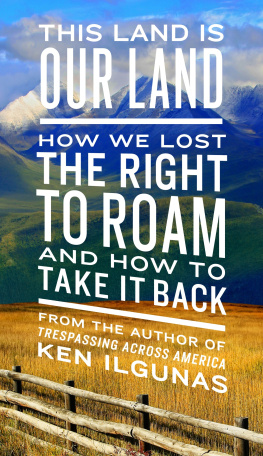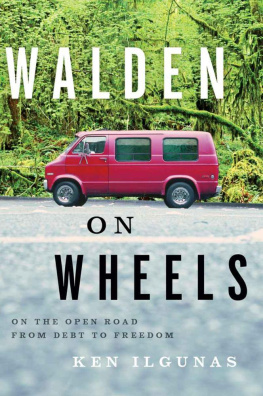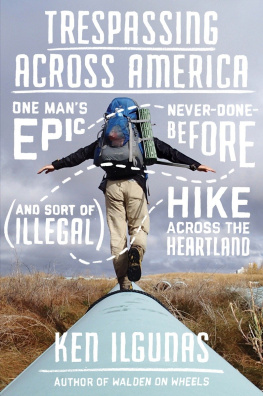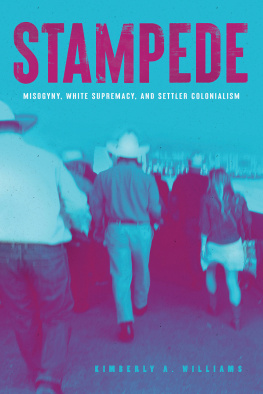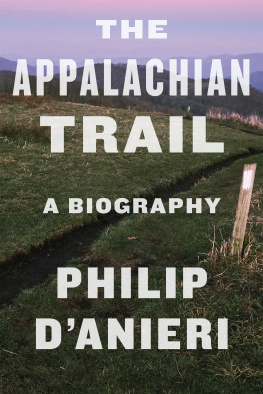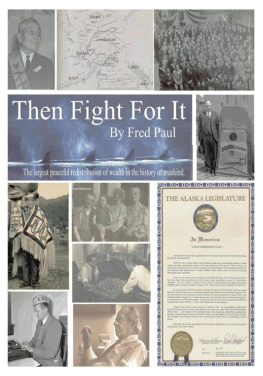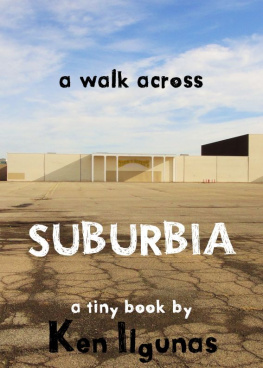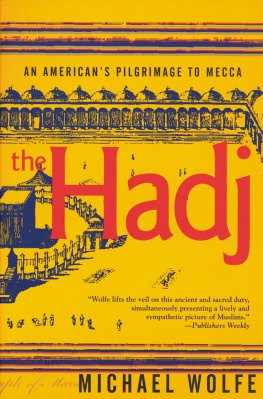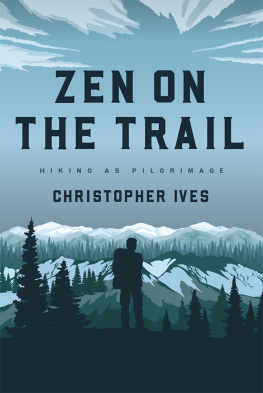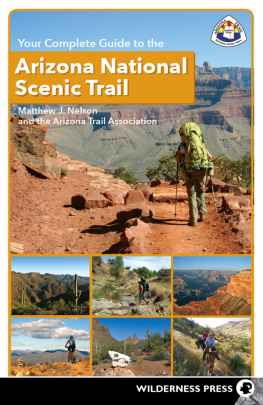of chocolaty soil from spruce roots, I wasnt feeling anything close to resolution or firmness of purpose at the prospect of crossing. I just felt stupid for even thinking about it.
The date was June 4, 2011, and it was my goal to cross the Tek to see the Magic Bus of the Stampede Trail.
There was something foolish about my goalfoolish because I wasnt sure exactly why I was about to take such a serious risk to see an old bus from a book and a film that I had merely enjoyed. I read Into the Wild as a twenty-one-year old, seven years before. As a young man from the suburban middle class, I sympathized with and thought I understood McCandless. But I was no idolizer or fanatic. The bus, to me, was little more than a glorified tourist attraction. Yet here I am, willing to risk death to see the books setting ?
I suppose theres nothing unusual about visiting the sites of our favorite books and the homes of our favorite authors. Every September, hundreds of pilgrims promenade through the streets of Bath, England, dressed as their favorite Jane Austen characters to celebrate her works. Oscar Wildes grave in Paris had been kissed so many times (in reference to his famous line, A kiss may ruin a human life) that a seven-foot-tall glass wall has been erected around it. The homes of Faulkner, Hemingway, and Sandburg have become tourist attractions. There are Harry Potter tours, Twilight tours, Da Vinci Code tours. There are hundreds of literary pilgrimages and author shrines, but none, to my knowledge, as deadly as the hike to Into the Wild s Magic Bus.
I didnt need anyone to talk sense into me. Risking death to see that bus, I knew, was ridiculous. Would I agree to a round of Russian roulette to tour Flannery OConnors birthplace? Would I undergo a series of Herculean tasks to take a dip in Walden Pond? Yet there was something pulling me toward the bus that would make me abandon all the self-preserving principles of good sense, practicality, and conservatism that I, as of late, had been placing my faith in. I was about to brashly throw out the window the only rational voice from my heads decision-making committee, leaving all the important calls up to a fraternity of my more savage senses: heedless spontaneity, thrill-seeking impulse, boorish bravado, and worst of all dim-witted male pride.
But mostly, I was curious. Having already walked half the trail, I wanted to go the rest of the way and get a feel for the place where Chris lived. I wanted to imagine what it was like for him to have slowly died in that bus all by himself. Most of all, I wanted to find out why Chriss story about an event that happened twenty years ago is still so relevant today.
And relevant it most definitely is. Even though McCandless would be approaching middle age if he were alive, and even though the book if it was a person is old enough to have already gone through puberty and Drivers Ed, and even though the movie has been available on Netflix for years, people still read and hotly debate McCandlesss story as if it had all happened yesterday. There are still ongoing discussions about the cause of his death on Internet forums. Into the Wild has over a dozen fan-based Facebook pages. The book is always near the top of the charts for Amazon.coms list of best-selling travel biographies and has been, amazingly, the No. 1, 2, and 3 bestsellers (accounting for various editions). A new book, Back to the Wild , featuring McCandless personal photos, came out in 2011, and, in 2014, a book was published by his sister, Carine, called A Wild Truth , which gives a brutal, uncensored account of what it was like growing up as a McCandless.
But the most striking testament of McCandless lasting popularity is the sheer number of people who travel from all corners of the book-reading world to see the bus. There are dog mushing tours to the bus, Jeep and ATV Into the Wild tours along the Stampede, even $1,300 helicopters tours yes helicopter tours! that land just feet from the buss door. And people from all over the world, of all ages, are risking their lives to hike to a bus that has become an enduring though dilapidated fixture of the national consciousness.
The Stampede Trail has become a passageway on which hikers and hunters, seekers and sportsmen, Speedoed mountain bikers and North Slope militiamen cross paths. The Magic Bus is becoming a national shrine, a holy pilgrim site, a modern-day Mecca.
And I was determined to see it, too. While its still there.
***
Having just graduated from a graduate school in North Carolina, my legs a pair of cadaverous pasty poles conditioned to the sedentary, I-do-nothing-but-sit-on-my-ass-all-day lifestyle of a student were in no shape for a hike, even a short, two-day hike. But having just been awakened from their two-year-long torpor and freed from their winter den, they paid no heed to mile lengths or the prospect of difficult terrain; they simply craved movement.
I was relocating to Alaska for the summer to work part-time and write part-time. It was a period of great uncertainty and great risk for me. I had a little under $1,000, a monetarily worthless grad degree in liberal studies, an old falling apart van full of mice in North Carolina, and no real job. I didnt have any direction either, except to pursue a farfetched dream to write and publish a book. With my book in mind, I persuaded my old boss at Coldfoot Camp a truck stop along the Dalton Highway north of the Arctic Circle where Id worked years before to provide me with room and board (in return for a couple of days of unsalaried work) so I could write in the midst of the inspiring Brooks Range. I wasnt sure how hard or how long Id pursue my dream, but I reasoned that, if I failed, Id at least get a summer in Alaska out of it.
Because I wasnt expected in Coldfoot just yet, and because it had been, so far, an unusually dry summer (which led me to believe the water level of the Tek would be low and manageable), I thought in this period of great risk and uncertainty that thered be no better way to begin my summer than with a risky, uncertain adventure to a literary mecca and a place Id always sort of wanted to see.
My friend Josh Spice, who lives in Fairbanks and who Id worked with years before when we were rangers at the Gates of the Arctic National Park, picked me up at the airport and drove us to his cabin to outfit us with gear. Josh, an avowed ultralight backpacker, is the sort of hiker who writes how many ounces his U-Dig-It weighs on his U-Dig-It, who religiously adheres to self-made charts about which one of his sleeping bags to take according to temperature forecasts, and who engages in Socratic dialogues with himself on the great synthetic fill vs. goose down debate. (On a hike with Josh, I once made the mistake of asking him for a sleeping bag recommendation an innocent, conversation gap-filling question that he confused for an invitation to talk for the next hour about the intricacies of convection heat loss, draft tubes, contoured hoods, and high-loft insulation, which, by the end, had me wondering if hed at some point switched topics to revolutionary spacecraft innovation or if he was still in fact talking about sleeping bags.)
He looked aghast at my giant pack, which Id filled with a cumbersome sleeping bag, a one-person tent (that he insisted we didnt need), and a spare set of heavy cotton clothes.
We drove for two hours south to Healy, a sprawling coal and tourist town of about a thousand residents, situated next to the northeastern edge of Denali National Park. Josh parked his Subaru at the head of the Stampede Trail alongside a red station wagon with British Columbia license plates and a Ford Escort with a sheaf of fishing rods and a twenty-four-pack of Pabst inside. After strapping on our packs and devouring the greasy contents of a pre-trip bag of Fritos, we began our seventeen-mile march to the bus, heading west along the Stampede.


